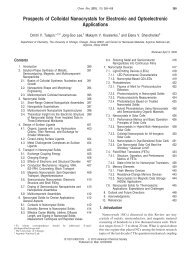Privacy with Prior Information
Privacy with Prior Information
Privacy with Prior Information
Create successful ePaper yourself
Turn your PDF publications into a flip-book with our unique Google optimized e-Paper software.
• assume every secret pair is of the form (s, ¬s) and Pr(s|θ)/ Pr(¬s|θ) ∈ [1/c, c] for some constant c.<br />
This is reasonable in that, secret s is only worthy to protect if the adversary doesn’t know much about<br />
it in advance.<br />
• ɛ and δ are parameters<br />
The algorithm works as follows:<br />
1. set α to some initial noise level α 0<br />
2. sample O((c + 1)k) = O(k) databases independently from θ<br />
3. compute the output for each sample and add noise Lap(α)<br />
4. For every pair of secrets (s, ¬s)<br />
5. find O s and O ¬s : outputs for samples <strong>with</strong> s and ¬s true<br />
6. for every possible output w<br />
7. denote p ws = Pr(w|s, θ) and p w¬s = Pr(w|¬s, θ)<br />
8. estimate ¯p ws and ¯p ws ′ using fraction of w in O s and O ¬s .<br />
9. if ¯p ws > e ɛ ¯p ws ′ + δ/2<br />
10. set α = 2α and go to step 3<br />
11. end for<br />
12. end for<br />
13. use α as the noise level for any future query.<br />
Before discussing the running time of the above procedure, we first show the accuracy of the estimation.<br />
Claim 2. Set the size of the sample k = O( (1+eɛ ) 2<br />
δ<br />
log U), where U is the upper bound of the size of the<br />
2<br />
output range and the number of pairs of secrets. Let α ɛ and α ɛ,δ be the minimum noise levels that guarantee<br />
ɛ-Pufferfish and (ɛ, δ)-Pufferfish privacy. With high probability, our algorithm will output a noise level α<br />
such that α ɛ,δ ≤ α ≤ α ɛ .<br />
Proof. Denote S as the set of databases that satisfy secret s and θ and ¯S as θ − S. Firstly, given 2(c + 1)k<br />
independent samples from θ, <strong>with</strong> probability at least 1 − 1 , at least k samples are from each of S or ¯S.<br />
U O(1)<br />
Fix some output w and some secret s. Let X i be the indicator random variable of the event that the i-th<br />
sample outputs w. Note that E[X i ] = p ws . Let X = ∑ k<br />
i=1 X i. We have<br />
Pr(|¯p ws − p ws | ≥ ∆) = Pr(|X/k − p ws | ≥ ∆)<br />
≤ 2e −2k∆2 Set ∆ =<br />
≤ 1<br />
U O(1)<br />
δ<br />
2(1 + e ɛ )<br />
Therefore, the probability that the estimated ¯p ws is more than ∆ away from its true value for any w and s<br />
is at most 1/U. In other words, <strong>with</strong> high probability, all estimates are <strong>with</strong>in ∆ distance away from their<br />
true values.<br />
6
















